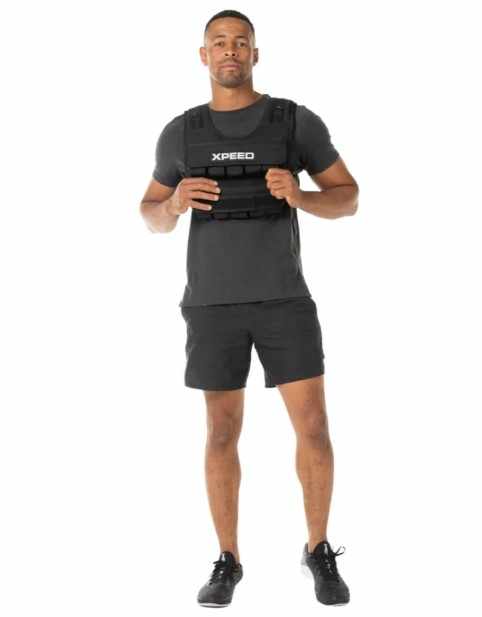
Choosing the right gear for your workout routine can mean the difference between progress and plateau. A Weight Vest can walk you through everything you need to know to make an informed and results-driven decision.
A fitness vest is more than just extra resistance — it’s a tool that can elevate your training, build endurance, and help activate muscles more efficiently. Whether you're into running, strength training, or high-intensity interval training (HIIT), a properly chosen vest can push your limits and accelerate results. But with various options in the market, selecting the one that matches your body type, activity, and fitness goals can be a challenge.
Understanding the Purpose Behind the Equipment
Before you invest in a fitness vest, consider why you need one. Some use it for improving cardio endurance, while others want to enhance strength or functional performance. Knowing your primary goal will help you narrow down the type of vest that fits.
For example, weighted vests for runners are generally slimmer and lighter, while vests for strength workouts are more robust, allowing greater load adjustments. Knowing your purpose will guide you toward the right features.
Key Features to Consider Before Buying
Not all vests are made the same, and choosing based on features is essential. Here’s what to look for:
1. Adjustability
Choose a vest that allows you to change the weight distribution easily. Some come with removable weight blocks, making it easier to modify resistance depending on the workout.
2. Comfort and Fit
The vest should fit snugly without restricting your movement or causing discomfort. Adjustable straps are ideal to accommodate different body types and ensure minimal bouncing during high-impact workouts.
3. Material and Durability
Breathable mesh fabrics, reinforced stitching, and quality closures enhance longevity and keep the vest comfortable during extended sessions. Look for moisture-wicking fabrics if you tend to sweat a lot during workouts.
4. Weight Capacity
Determine how much resistance you need. Beginners may start with 10–20 lbs, while experienced trainers can go up to 40–60 lbs or more. The capacity should align with your strength level and goals.
5. Weight Distribution
A balanced vest improves posture and reduces the risk of injury. Make sure the weights are evenly distributed across your chest, back, and shoulders to maintain stability and comfort.
Types of Workouts That Benefit from a Weight Vest
Adding resistance can turn regular exercises into more challenging versions. Here are some ways a weight vest can elevate different routines:
Running and Walking: Burn more calories and build leg strength.
Bodyweight Exercises: Increase difficulty for squats, push-ups, lunges, and pull-ups.
HIIT Workouts: Add intensity to plyometric movements.
Functional Fitness: Improve balance, agility, and core strength by adding resistance to real-life movement patterns.
How to Choose Based on Fitness Level
Beginners should opt for lighter vests with breathable materials and a snug fit to ease into the additional load. Intermediate users may benefit from adjustable vests that grow with their strength. Advanced athletes often prefer heavier vests with high durability and maximum resistance for progressive overload.
Gender-Specific Considerations
Body shape plays a role in how the vest fits and performs. Some models are designed with a narrower or curved frame to suit female athletes better. While many vests are unisex, choosing one based on your specific body structure can prevent discomfort and ensure better results.
Safety Tips for Using a Weight Vest
Start slow. Add resistance gradually to avoid injury.
Maintain good form. Don’t let the extra weight compromise your technique.
Stay hydrated. Heavier workouts increase sweating and water loss.
Listen to your body. Take breaks as needed and avoid overtraining.
Maintenance and Care
To extend the life of your vest:
Air it out after every workout.
Clean it according to the manufacturer's instructions.
Store in a cool, dry place. For more info, click here
Regularly inspect for wear and tear, especially if used heavily outdoors.
Summary
Investing in the right training equipment can significantly enhance your results, and choosing a weight vest is no exception. With so many styles, weights, and features available, it’s essential to assess your goals, body type, and routine before making a purchase. The right choice will not only improve your physical strength but also your confidence and motivation in every session.


Write a comment ...